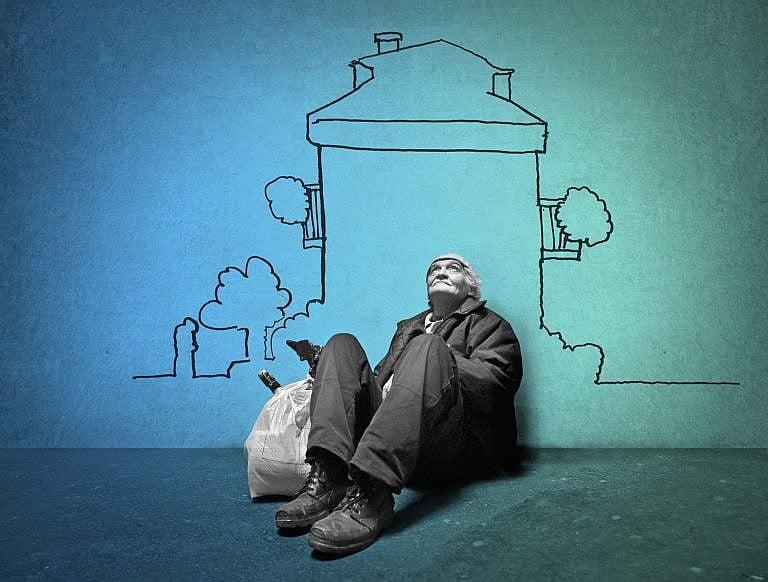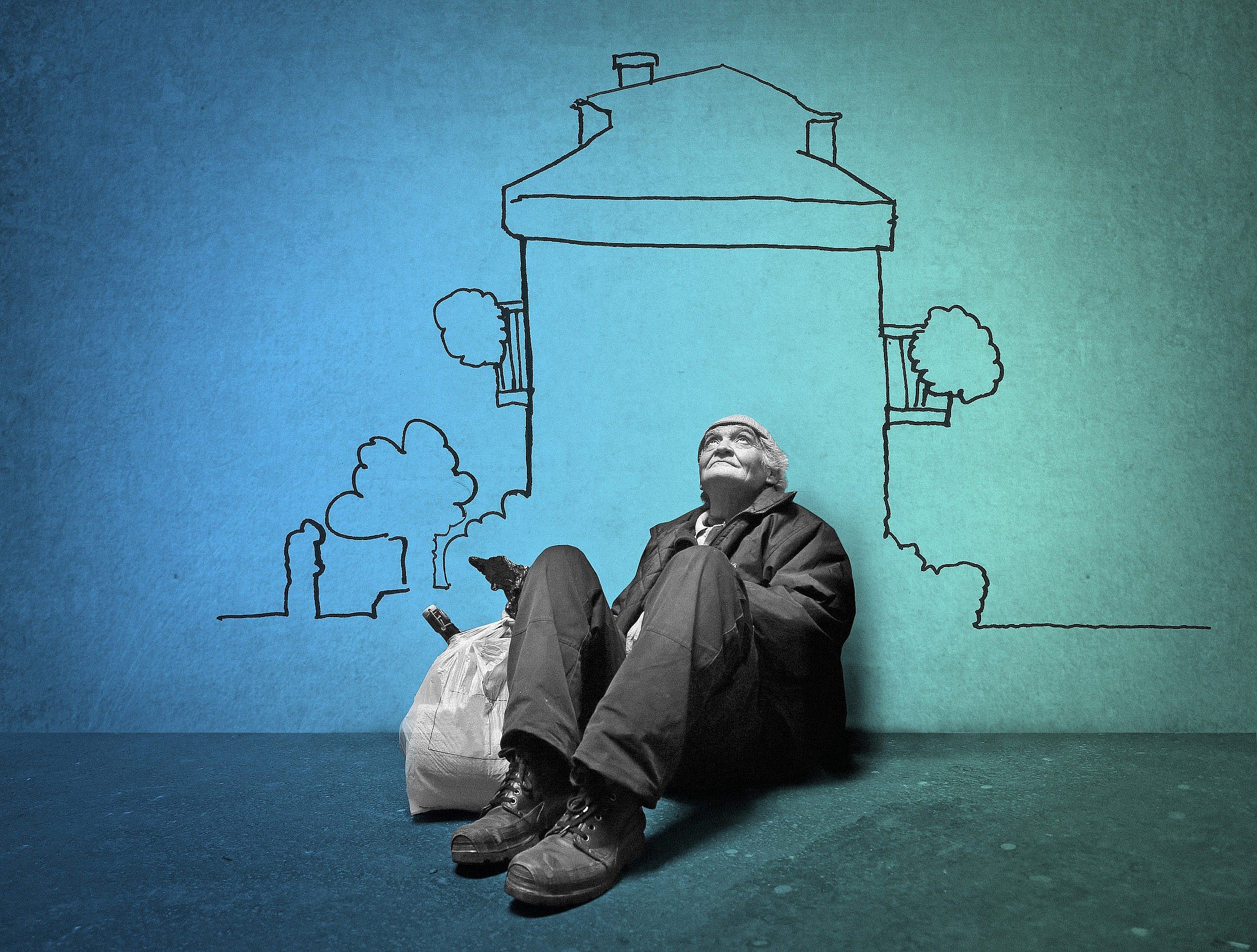Why a housing-first model is the only way to solve the homelessness crisis
Governments try to address issues like addiction and mental illness before helping people find housing. That’s the wrong approach.

Share

Last year, I met a 73-year-old woman who became homeless for the first time in her life after a family breakdown. She came to the Lighthouse—the emergency shelter in Orillia, Ontario, where I work as an executive director—with just her walker and a bag of clothes.
She lived at the Lighthouse for the next four months. Housing workers helped increase her pension, and on-site medical staff connected her with family doctors. Now, she lives in an affordable retirement home in Orillia. She no longer uses a walker and comes back to the Lighthouse to volunteer. We offer more than just emergency shelter: we’re a not-for-profit that provides supportive housing and other services to people experiencing homelessness.
For years, the government and homeless shelters have adopted a treatment-first approach to the problem, trying to solve the issues that lead to homelessness—like alcoholism, drug dependency, mental health struggles or family crises—before helping people find housing.
RELATED: How Canada’s housing crisis is fuelling violence on our public-transit systems
There’s a better alternative. With somewhere to live, eat, shower and sleep, it’s easier for people to get their lives back on track. The Lighthouse uses a housing-first approach that provides people with short-term housing and gives them the support they need to find a permanent place to live. Some people stay for a week in our emergency shelter, while others stay for up to four years in supportive housing. In that time, we’re able to offer all kinds of support in partnership with government and non-profit organizations. We work with the Canadian Mental Health Association, for example, to help people with mental illness. We provide healthy food and cooking classes. Our team helps people apply for identification, find jobs, increase their social support and ultimately find affordable permanent housing.
We know the housing-first model works. A recent study by the Mental Health Commission of Canada looked at 2,000 Canadians experiencing homelessness in Vancouver, Winnipeg, Toronto, Montreal and Moncton. Over a five-year period, roughly half were given the typical treatment-first approach, while the rest were housed first. By the end of the five years, only 31 per cent of the treatment-first participants were housed full time, while 62 per cent of the housing-first participants were housed full time. The housing-first approach was twice as effective in keeping people off the streets.
When I first joined the Lighthouse back in 2015, it was only a men’s shelter with 14 beds, five staff and a soup kitchen working out of a small Orillia home. We wanted to help more people, and between 2019 to 2021, we raised $14.5 million to expand our services. The Lighthouse now sits on a three-acre property in Orillia. We have a 20,000-square-foot emergency shelter, with 50 beds for men and women, eight beds for youth, and a cafeteria. Our annual budget is $2.2 million, up from just $140,000.
READ: My mortgage is about to go up by at least $1,000 a month
We’ve been using the housing-first approach for the past six years. Last year, we had a 50-year-old gentleman struggling with an addiction who was homeless for 18 months; we moved him into supportive housing. He connected with the Canadian Mental Health Association and they helped him become substance-free for the first time in a while. He did so well that we hired him as a janitor for our community services building.
At our shelter, participants can stay for as long as they want. We usually have a wait list of 10 to 15 people for our emergency shelter, and we prioritize those with the greatest need. There’s a large café where everyone receives breakfast, lunch and dinner, plus a couple of snacks. Last year, we served 71,000 meals. Breakfast is hot or cold—bacon and eggs, cereal and muffins. Lunch is usually a soup, sandwich and salad, and dinners are heartier beef stews, pork roasts or chicken breast with vegetables. We also have an atrium with a TV, couches, chairs and a few computers, which participants can use to find jobs or housing and connect with family members.
Our supportive housing program has 20 bachelor units, where participants can stay for up to four years. To access the program, participants call 211 and apply for housing through the County of Simcoe. If they’ve been homeless for more than six months, they receive placement. Participants pay roughly $500 a month, depending on their income and whether they’re supported by Ontario Works or the Ontario Disability Support program. This gets them a 400-square-foot unit with a full kitchen, double bed, washroom, tables and chairs—similar to a comfortable and clean hotel suite. In 2022, our supportive housing program ran 148 educational sessions on life skills: budgeting, cooking, anger management classes and more. This support is key—it provides our participants with skills to bridge the gap from homelessness to permanent housing.
MORE: Our mortgage payments went up to more than $3,300 a month
Staff are on site 24/7 and are trained in social work or have other relevant life experience. They’re there to keep participants safe and can respond to overdoses or mental health crises. We don’t have any security guards—our staff are trained in de-escalation and crisis intervention. It’s not a fit for everyone: if participants come into the building and they’re a danger to themselves or others, they’re discharged from the program.
We’ve been seeing more and more families experiencing homelessness, whether it’s because of unemployment or rising rent and living costs. We saw record-high demand for our motel voucher program last year, which is provided to families experiencing homelessness. With an increase in inflation and a lack of affordable housing across the country, we need to address homelessness as quickly and efficiently as possible. And that means exploring the housing-first model as a solution.
—As told to Mathew Silver